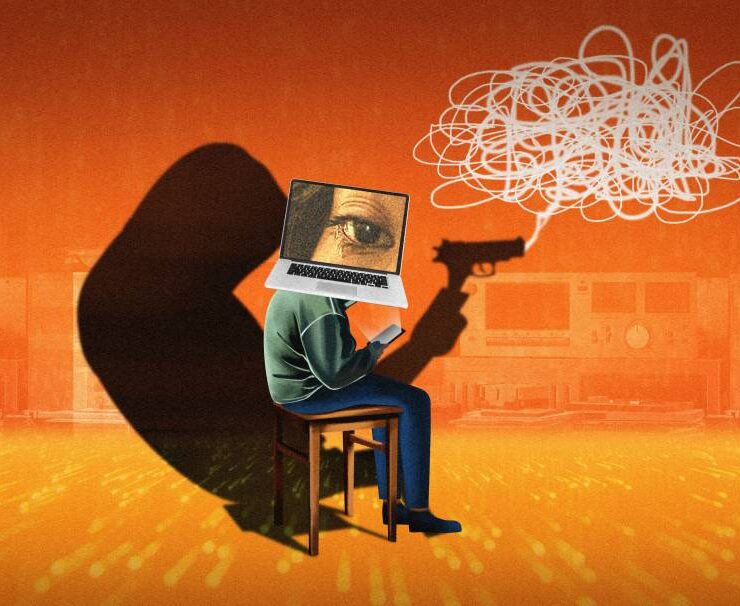What will another anti-bullying law do?

Senator JV Ejercito recently filed the Anti-Online Hate and Harassment Bill, also known as the “Emman Atienza Bill,” in the wake of the 19-year-old content creator’s tragic passing. The proposed law seeks to build upon the limited provisions of existing anti-bullying laws to better protect online users against cyberbullying, fake news, and online defamation.
Rising incidents of cyberbullying are undoubtedly a cause of concern among Filipinos. Not only is it difficult to catch and document in the first place, but its sensitive nature also requires finesse and expertise from accredited professionals to navigate.
And when we’re dealing with victims who don’t know who to approach after they’ve been bullied, who don’t even know that they’ve been bullied, and those who don’t want to reach out at all—it only proves that bullying isn’t just about online security but also a matter of education, mental health, and long-held beliefs deeply ingrained in Filipino culture.
But in the wake of a high-profile death, and despite our already existing cyberbullying laws, is Ejercito’s proposed bill simply performative or a step in a much-needed direction?
The “Emman Atienza Bill”
Ejercito outlined what will be covered under his proposed legislation:
• Cyberlibel, online hate speech, harassment, including hatred or discrimination based on gender or sexuality, cyberstalking, and the non-consensual sharing of private information, will be explicitly penalized
• Digital platforms will be required to remove or block flagged harmful content within 24 hours of verified complaints or court orders. Applicable platforms will also be mandated to suspend or ban offending users, preserve digital evidence, and provide accessible reporting and redress systems
• The bill will include the establishment of a Victim Support and Protection Program that offers psychosocial support, counseling, legal aid, and protection at no cost to the victim
• Verified offenders will face imprisonment and fines ranging from P50,000 to P200,000
“While social media serves as a platform to advocate for truth, it has also given room for ruining reputations, spreading fake news, rumors, false accusations, and violence. In reality, there are no delete or edit buttons for the ones we have hurt,” says Ejercito in an official Senate press release.
Is it necessary?
According to a 2022 report by the Second Congressional Commission on Education (EDCOM 2), one out of three Filipino students experiences bullying in schools, with 43 percent of girls and 53 percent of boys being bullied several times a month. The Department of Education also recorded 2,500 cases of bullying from 2024 to 2025, marking a higher number than the 2,268 cases the previous school year.
That only concerns recorded cases within the school. What about those that go unreported? What about cases of bullying outside the school?
Ejercito added that high internet usage among Filipinos makes them more susceptible to cyberbullying, necessitating stronger safeguards and support systems. “73.4 percent of the country’s population, or about 86.75 million, are social media users. With approximately 10 hours of internet use daily, the online exposure of Filipinos is among the highest in the world,” the senator also says in his statement.
But are there any existing anti-cyberbullying laws already present in the Philippines?
The Cybercrime Prevention Act of 2012, or RA 10175, lists punishable cybercrime offenses, from illegal breaches to computer systems to computer-related identity theft. Libel is also included under its scope. The Safe Spaces Act or RA 11313 protects both men and women in public spaces, online, workplaces, and educational and training institutions. However, it mainly focuses on sexual harassment. Meanwhile, the Anti-Bullying Act of 2013 or RA 10627, specifically defines the various forms of bullying, but its scope and implementation are mostly limited to schools.
Lastly, the Mental Health Act or RA 11036, affirms access to mental health services as a basic right of all Filipinos. But according to a 2023 report by the Congressional Policy and Budget Research Department, public sector expenditure on mental health is 16 times lower than the global average. Not to mention, there are only two mental health workers per 100,000 people in the Philippines.
What separates the “Emman Atienza Bill” from these already existing statutes is its targeted scope and its inclusivity toward bullying victims in other spaces. However, as it stands, there aren’t enough mental health professionals around to take on the burden of an entirely different law, on top of the already existing provisions we have. If anything, it’s like further spreading out an already thin public sector workforce.
It’s not about passing a new law with a shiny nickname—when strengthening the safeguards that we already have and supporting the mental health professionals needed to enforce these policies is what really has to be done.





















